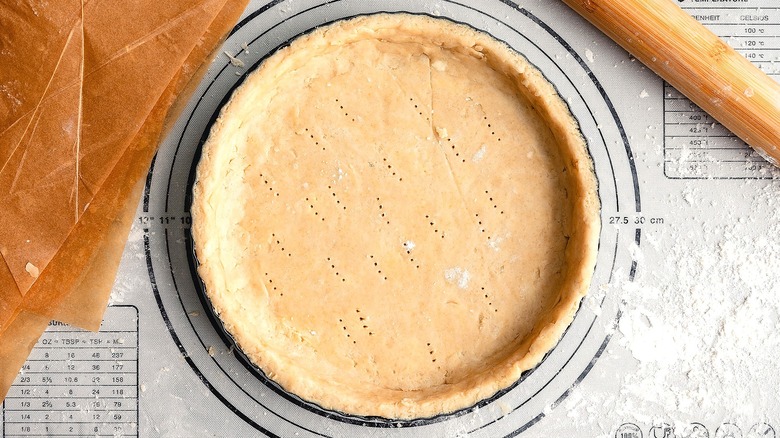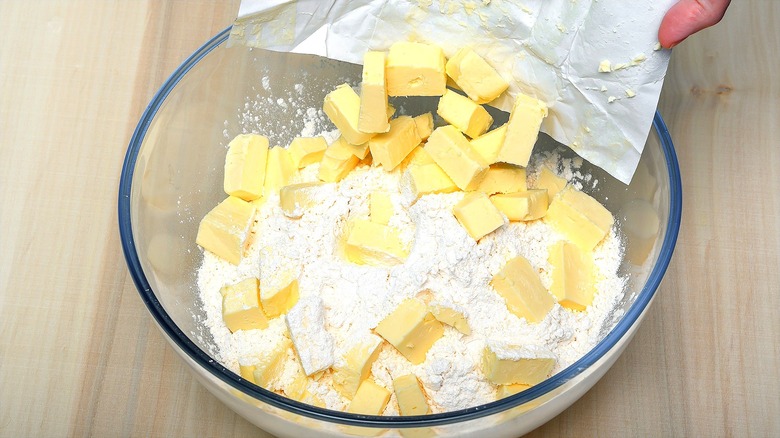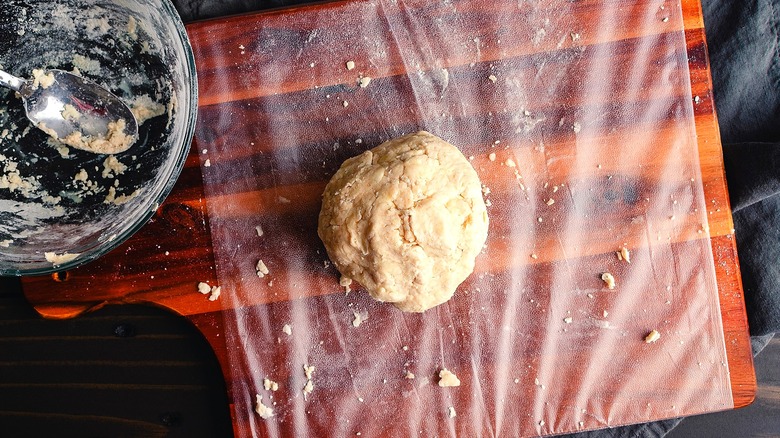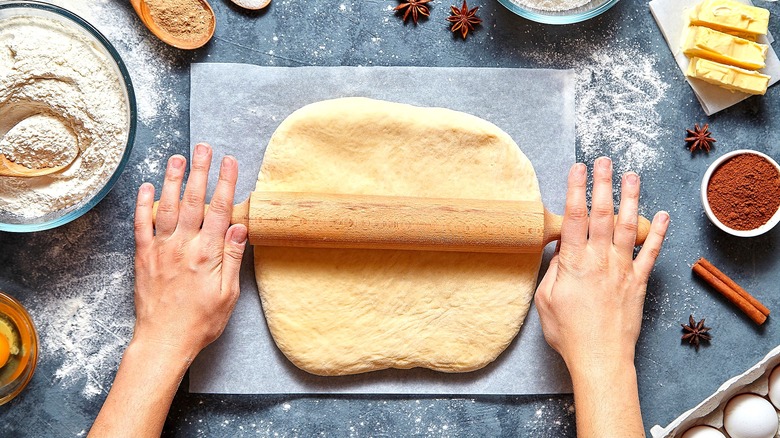3 Common Mistakes That Are Making Your Pie Crust Tough
Part of perfecting your basic buttery pie crust recipe is ensuring your pastry dough can be baked into a tender and flaky crust. Believe it or not, even if you follow your favorite recipe word-for-word, you can still produce a crust with a dense, unforgiving texture. Thankfully, corporate pastry chef at JF Restaurants, Sofia Schlieben, recently revealed to Food Republic three habitual baking mistakes that may be the cause of stiff pie crust.
According to Schlieben, "The main reasons pie crust can turn out tough are using less butter than the recipe calls for, taking too long to mix (causing the butter to start melting), or overworking the dough after adding the liquid." Not only are these common mistakes easy to overlook, but they can be fixed by thinking ahead or experimenting with different preparation methods.
Even though pie crust is fairly simple to make, there are several unassuming steps you can take for better results. First and foremost, work with chilled ingredients only. Use butter straight from the refrigerator — or freezer. If you plan on using water, add a few ice cubes to make it extra cold. Once your pastry is prepared and ready to bake, large and small blobsof butter should be visible to achieve extra flaky results. Next to using cold ingredients, learn how to avoid the common baking mistakes noted by Schlieben's to make tender pie crusts each and every time.
Use enough butter
Whether you're making an all-butter pie crust or using a combination of butter and shortening, always use the recommended amount of fat in your designated recipe. Sure enough, there's a reason Martha Stewart's key to better pies is all in the butter. These small mounds of tasty fat expand and create steam through baking, which leads to flakier pastry.
If you reduce the amount of butter in your recipe, you run the risk of creating an overly dense or dry pie crust, according to Sofia Schlieben. With less butter, you may have to add more water to get a rollable consistency. Unfortunately, too much water may cause you to overwork your dough or accidentally develop the gluten in your flour, which can further impact the consistency of your crust.
Prep your ingredients ahead of time to keep things cold
To avoid taking too much time incorporating butter and water to flour, prepare your ingredients in advance. Schlieben stated, "I always dice my butter and freeze it while I prepare the rest of my ingredients." You can also use a cheese grater to grate frozen butter for smaller, more even particles. Just remember to think ahead and give your butter additional time to chill once more before using it.
Whether you're only using water or also incorporating the pantry ingredient that prevents dry pie dough, keep both water and vinegar nice and chilled in the fridge. To further ensure your butter doesn't soften or melt during the mixing process, feel free to measure out your dry ingredients in a mixing bowl and store it in the refrigerator until you're ready to make your crust. This way, everything is measured out and ready to use, and you're less likely to accidentally melt your butter.
Avoid over-working your dough
To avoid over-handling your dough, mix the ingredients together until just combined. Sofia Schlieben explained how she minimizes handling her pastry dough in more detail: "When mixing the dough, I intentionally leave some parts slightly dry. Once I transfer it to plastic wrap, I use a bit of pressure to pack it together and lightly roll it. This process helps hydrate any dry bits without over-mixing."
For even better hydration, you might even want to use vodka to make pie crust. Certain spirits add moisture to your dough without developing the gluten in your flour. Schlieben stated, "I also like to use frozen vodka or gin instead of water — it dissolves faster and helps create a flakier crust."
Whichever assortment of ingredients you decide to use, once your dough has been successfully assembled, gently roll the dough into a small, flat disc, wrap it in plastic wrap, and chill for at least 30 minutes before using. Why flat? Schlieben noted, "Keeping the disc flatter reduces chilling time and makes the dough easier to roll later."




